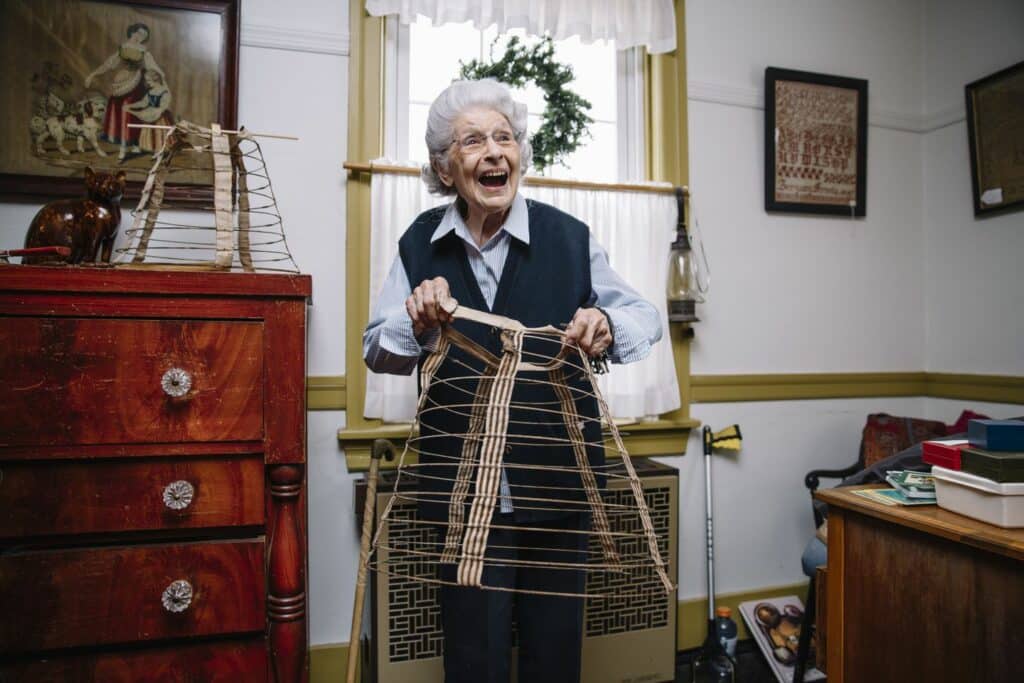Part of the fun of walking through an antique shop is the memories it evokes. How often do you see something that triggers a story or reminds you of your childhood or a family member? A piece of furniture similar to the one in your aunt’s living room, or something that your grandmother had in her kitchen, or that was on your mother’s dressing table… Often what we buy as antiquers and collectors has memory associations.
Let’s face it. Antiques are memory triggers, which is why they are finding new homes in some interesting and unlikely places these days thanks to Reminiscence therapy, a new approach in memory care for seniors with Alzheimer’s and other forms of dementia.
Reminiscence therapy is a treatment that uses all the senses — sight, touch, taste, smell, and sound — to help individuals with dementia remember events, people, and places from their past lives. As part of the therapy, care partners may use objects in various activities to help individuals trigger memories. That’s where antiques come in.
Elder-care facilities, senior centers, nursing homes, and adult communities are increasingly incorporating antiques into their decor to make residents feel more at home and connected to their past. That includes designing rooms straight out of the 1930s, ‘40s, and ‘50s with authentic furnishings and decorations, and displaying collections of antique items in public places where they can be viewed by residents and their guests. Using antiques in such a way helps, in particular, individuals with memory loss, dementia, and Alzheimer’s trigger memories, and facilitates conversation in much the same way as photo albums and vintage era music.
In Olathe, Kansas, the Cedar Lake Village retirement community is building a memory-care assisted-living facility that includes a 1968 Ford pickup in the courtyard for residents to sit in, tinker on, listen to music “and reminisce about their first vehicle,” said Joanna Randall, the facility’s executive director. In England, Grove Care Ltd. has “Memory Lane” on the grounds of its dementia-care facilities, featuring a 1950s-themed traditional pub, post office, and grocery store. The Easton Home, about 50 miles north of Philadelphia, converted an employee break room and a multipurpose room into its own version of Memory Lane. A self-contained community with a residential memory-support component, under development in Southeastern Connecticut, incorporates a retail pavilion of restaurants and businesses for residents and their guests and the surrounding community. Their plans include reaching out to antique businesses to both furnish spaces throughout the community and lease retail space in the pavilion.
It’s nice to know that even if everyday items from eras past don’t hold their financial value, as a memory, they are priceless.





Related posts: